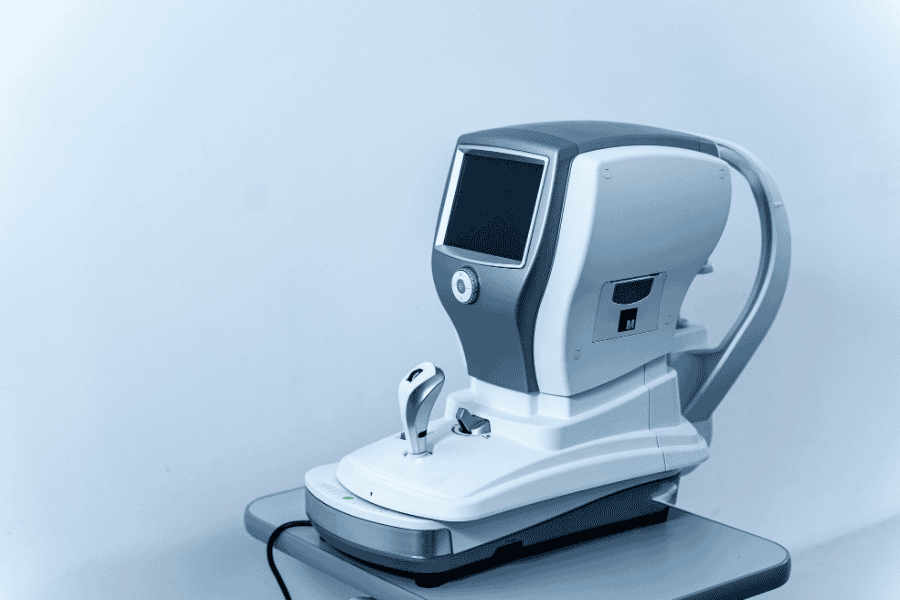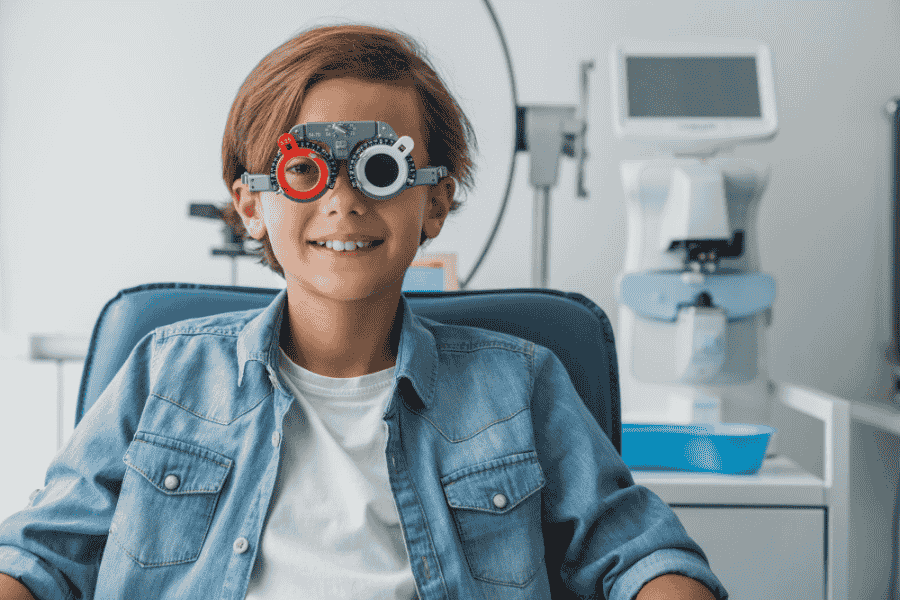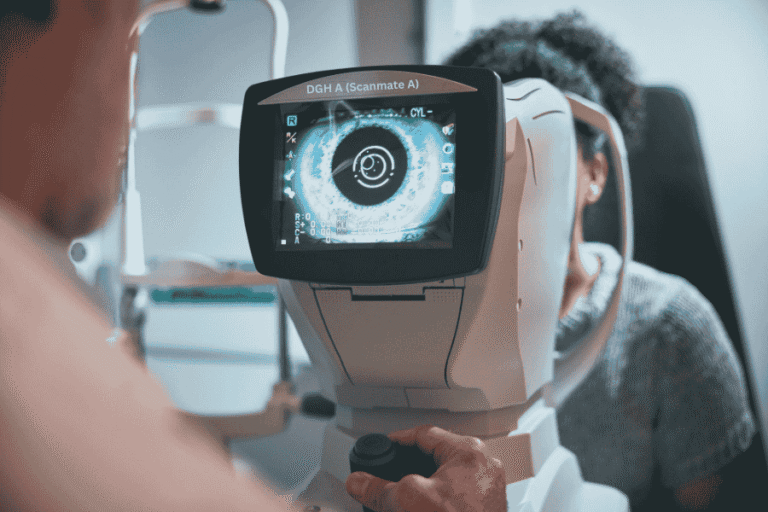Eye measurement is vital for accurate diagnosis, treatment planning and surgical success in ophthalmology. The DGH A (Scanmate A) is a modern A-Scan ultrasound that blends precision with portability, making it a trusted tool for cataract surgery myopia care, and pediatric eye exams. This guide explores its evolution, technology, step-by-step use, clinical applications, benefits, limitations, comparisons with alternatives, and future in eye care.
What is DGH A?
DGH A, also known as the Scanmate A, is a portable A-Scan ultrasound device designed for accurate eye measurement and ocular diagnostics. Often used in ophthalmology clinics, it helps measure axial length, anterior chamber depth, and lens thickness, which are vital for cataract surgery planning and myopia management. Unlike bulky systems, the DGH A combines precision, portability, and patient comfort, making it a trusted choice for both small practices and mobile eye care units. Whether you’re exploring what DGH A is or comparing it with other A-Scan devices, this guide will cover everything you need.
Evolution of A-Scan Technology
The journey of A-Scan ultrasound in ophthalmology has transformed how specialists plan surgeries and track eye health. Early A-Scan devices were bulky, limited in accuracy, and required complex setups. Over time, advancements in ocular ultrasound introduced better resolution, faster analysis, and safer non-invasive eye measurements. Today, modern systems like the DGH A (Scanmate A) represent the next step—offering high-precision results with compact, portable designs. This evolution allows clinicians to measure axial length and other key parameters more reliably, improving outcomes in cataract surgery planning, refractive surgery, and myopia progression monitoring. Similar to how Transds has evolved in the digital landscape, The DGH A blends history with innovation in eye care.
Technical Overview & Specifications

The DGH A (Scanmate A) is engineered to deliver precise ocular measurements essential for modern ophthalmology. It measures axial length, anterior chamber depth (ACD), and lens thickness with a resolution of 0.01 mm, using a reliable 10 MHz probe. Clinicians can choose between contact or immersion mode, supported by a compression lockout feature to prevent errors. Its built-in software includes leading IOL calculation formulas such as SRK/T, Hoffer Q, Holladay, Haigis, and Shammas, ensuring accurate cataract surgery planning. Lightweight and USB-powered, the device integrates easily with EMR systems for seamless reporting. With FDA/CE certifications, the DGH A ultrasound combines safety, speed, and portability in one compact solution.
Step-by-Step: How DGH A Works
The process of using the DGH A (Scanmate A) is straightforward and ensures accurate, repeatable results.
-
Patient Preparation – First, the patient is prepared by ensuring the eye is comfortably positioned.
-
Mode Selection – The clinician then selects either contact mode or immersion mode, depending on the level of precision required.
-
Measurement – With the 10 MHz probe, the device measures axial length, anterior chamber depth, and lens thickness in seconds.
-
Error Prevention – Its compression lockout system reduces operator error.
-
IOL Formula Application – The software instantly applies IOL formulas like SRK/T or Haigis for cataract surgery planning.
-
Data Export – Results can be quickly exported to EMR systems via USB.
-
Outcome – This step-by-step process ensures accurate, repeatable outcomes, making the DGH A ideal for busy clinics and mobile setups.
Quick Checklist
-
The patient’s eye is comfortably positioned
-
Contact or immersion mode selected
-
Axial length, ACD, and lens thickness were measured with a 10 MHz probe
-
The compression lockout system is active
-
IOL formulas (e.g., SRK/T, Haigis) applied
-
Results exported to EMR via USB
-
Confirmed accurate, repeatable outcome
Clinical Applications of DGH A
The DGH A (Scanmate A) is widely used across ophthalmology for both routine and advanced care. Its most common role is in cataract surgery planning, where accurate axial length and IOL calculations directly influence surgical outcomes. Eye specialists also rely on it for myopia management, tracking axial length changes in children and adults to monitor progression. In pediatric ophthalmology, the device’s portability makes it easier to perform quick and non-invasive scans on younger patients. For refractive procedures, precise measurements of the anterior chamber depth and lens thickness help guide safe surgical planning. The lightweight design further supports mobile eye camps and outreach programs, allowing clinicians to deliver reliable diagnostics even in resource-limited settings.
Benefits of Using DGH A
The DGH A (Scanmate A) offers a balance of accuracy, portability, and patient comfort, making it a trusted tool in modern eye care. Its 0.01 mm resolution ensures highly reliable measurements of axial length, anterior chamber depth, and lens thickness, which are vital for cataract surgery planning and refractive procedures. The compact, USB-powered design saves space and supports both clinics and mobile eye units. Patients benefit from quick, non-invasive scans, while clinicians appreciate reduced operator error thanks to the compression lockout feature. With built-in IOL formulas and easy EMR integration, the DGH A streamlines workflow, improves efficiency, and delivers consistent results—enhancing both diagnostic accuracy and overall patient care.
Limitations & Challenges
While the DGH A (Scanmate A) is highly effective, users should also be aware of its limitations. The device requires regular calibration and maintenance to ensure accuracy, which can be time-consuming for busy clinics. Inexperienced technicians may face a learning curve when switching between contact mode and immersion mode, as improper handling may affect results. Compared to advanced optical biometry systems like IOLMaster or Lenstar, or newer digital tools such as the CDiPhone, the DGH A offers portability but may not provide the same level of detailed imaging. Environmental conditions, such as improper probe care or sterilization, can also impact reliability. Despite these challenges, the DGH A remains a cost-effective and portable solution for clinics needing consistent A-Scan ultrasound measurements.
DGH A vs. Alternatives
A concise, side-by-side view of core capabilities, usability, and ideal use cases across A-Scan ultrasound and optical biometry systems.
| Feature / Device | DGH A (Scanmate A) | IOLMaster (Zeiss) | Lenstar (Haag-Streit) | Other A-Scan Ultrasounds |
|---|---|---|---|---|
| Measurement Type | Ultrasound A-Scan (10 MHz) | Optical biometry (PCI) | Optical biometry (OLCR) | Ultrasound A-Scan |
| Accuracy / Resolution | 0.01 mm (axial length) | ≈0.01 mm (high repeatability) | ≈0.01 mm (very high precision) | Varies (often 0.02–0.05 mm) |
| Key Parameters | Axial length, ACD, lens thickness | Axial length, ACD, keratometry, corneal thickness | Axial length, ACD, lens thickness, keratometry, WTW | Typically axial length + ACD |
| IOL Formulas | Built-in: SRK/T, Hoffer Q, Holladay, Haigis, Shammas | Broad library, regularly updated | Broad library, regularly updated | Limited or varies by model |
| Portability | Compact • USB-powered | Desktop system | Desktop system | Some portable, often bulkier |
| Ease of Use | Quick setup; contact/immersion modes | Automated; low operator dependency | Automated; low operator dependency | Manual skill often required |
| Patient Comfort | Quick immersion avoids corneal compression | Very high (non-contact) | Very high (non-contact) | Contact required |
| Cost | Mid-range | High | High | Low to mid |
| Best For | Small clinics, mobile units, outreach, cataract & myopia tracking | High-end cataract centres; advanced refractive surgery | Premium practices; research-level precision | Clinics needing basic A-Scan only |
Mid-range cost
High acquisition cost
Pricing & Buying Guide
The DGH A (Scanmate A) is considered one of the more cost-effective A-Scan ultrasound devices on the market, offering strong value for clinics seeking accurate ocular biometry without investing in larger, high-cost systems. While exact pricing varies by region and supplier, the device typically falls into a mid-range category compared to advanced optical biometers. Prospective buyers can source it through authorized distributors or specialized medical equipment providers, many of whom also offer leasing and financing options for smaller practices. Before purchasing, clinics should evaluate warranty terms, service support, and availability of software updates to ensure long-term reliability. For mobile setups and growing practices, the DGH A represents a practical investment.
Setup, Maintenance & Troubleshooting
Setting up the DGH A (Scanmate A) is straightforward, thanks to its compact, USB-powered design. Once connected, clinicians can quickly calibrate the A-Scan ultrasound probe to ensure accurate readings. Routine maintenance is essential—this includes proper probe cleaning and sterilization after each patient, as well as scheduled calibration to maintain measurement precision. Clinics should also keep software and firmware updated for compatibility with the latest EMR systems. Common issues, such as inconsistent scans or data export errors, can often be resolved through recalibration, adjusting immersion fluid levels, or restarting the system. By following best practices in setup and care, eye care professionals can extend the device’s lifespan and ensure consistent, high-quality results with every scan.
Patient Experience

One of the strengths of the DGH A (Scanmate A) is the comfort it offers to patients. The A-Scan ultrasound biometry process is non-invasive and takes only a few seconds, making it suitable for both adults and children. In contact mode, a probe gently touches the cornea, while immersion mode eliminates corneal compression for more accurate results. Most patients report little to no discomfort, and the quick procedure reduces anxiety during eye exams. The device’s efficiency means shorter chair time, which benefits busy clinics and mobile programs. By combining precision, speed, and patient comfort, the DGH A ensures reliable results without sacrificing the overall experience.
Case Studies & Real-World Use
The DGH A (Scanmate A) has proven its value in a variety of clinical settings. In cataract clinics, surgeons rely on its precise axial length and IOL calculations to improve surgical outcomes and reduce post-operative complications. Pediatric specialists use the device to monitor myopia progression, where accurate and repeatable measurements are critical for long-term care. Mobile eye camps and outreach programs also benefit from the portable design, allowing reliable diagnostics in areas with limited resources. In one case, a rural eye care initiative used the DGH A to deliver thousands of scans, ensuring patients received accurate diagnoses without traveling to large hospitals. These real-world examples highlight the device’s versatility and impact on global eye care.
Future of DGH A & Eye Care Technology
As ophthalmology advances, the DGH A (Scanmate A) is expected to evolve alongside new technologies. Future versions may integrate AI-driven diagnostics, helping clinicians interpret A-Scan ultrasound results faster and with greater precision. Cloud-based data storage and remote access could allow doctors to track axial length changes and manage myopia progression across multiple clinics. Enhanced connectivity may also streamline integration with next-generation EMR systems, creating more efficient workflows. Much like how Schedow is shaping the future of smart automation, improvements in probe technology and software algorithms could reduce errors and further improve patient comfort. By combining portability with innovation, the future of DGH A positions it as a cornerstone in cataract surgery planning and broader ocular diagnostics worldwide.
FAQs
Q: What is the DGH A (Scanmate A)?
A: It is a portable A-Scan ultrasound device used in ophthalmology for accurate ocular measurements such as axial length, ACD, and lens thickness.
Q: How is DGH A used in cataract surgery planning?
A: It provides precise measurements and built-in IOL calculation formulas to ensure accurate lens power selection before surgery.
Q: Is DGH A safe and comfortable for patients?
A: Yes. Scans are non-invasive, quick, and well-tolerated, making the device suitable for both adults and children.
Q: What is the price range of DGH A?
A: Costs vary by distributor and region but it is generally more affordable than advanced optical biometers, with financing options available.
Q: What maintenance does DGH A require?
A: Regular calibration, cleaning and sterilization of probes, plus keeping firmware/software updated for reliable long-term use.
Q: What is DGH A used for in ophthalmology?
A: DGH A, or Scanmate A, is an A-Scan ultrasound device used to measure axial length, anterior chamber depth, and lens thickness for accurate cataract surgery planning and myopia management.
Q: Is DGH A suitable for children?
A: Yes. Its quick, non-invasive scans make it safe and practical for pediatric ophthalmology, even in young patients.
Q: How accurate is DGH A compared to optical biometers?
A: While devices like IOLMaster or Lenstar offer advanced imaging, the DGH A provides highly reliable results with 0.01 mm resolution, making it an excellent alternative for many clinics.
Q: What warranty and support does DGH A include?
A: Most distributors offer standard warranties with options for extended service plans. Clinics should also ensure access to software updates and technical support for long-term reliability.
Conclusion
The DGH A (Scanmate A) stands out as a reliable, portable, and precise A-Scan ultrasound device for modern ophthalmology. From cataract surgery planning to myopia progression monitoring and even pediatric applications, it delivers consistent, accurate results that support better patient outcomes. While it requires regular calibration and may not match the advanced imaging of high-end optical biometers, its balance of affordability, portability, and ease of use makes it an excellent choice for clinics, hospitals, and mobile eye care units. For practices seeking to improve workflow efficiency and patient comfort without compromising accuracy, the DGH A remains a practical investment and a trusted partner in ocular diagnostics.


